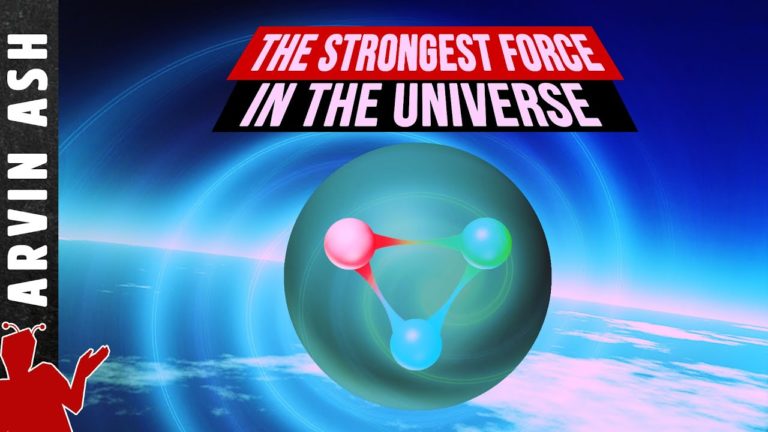QCD: Visualizing the Strongest Force in the Universe: Quantum Chromodynamics
QCD: Quantum Chromodynamics. How can positive protons be so close together in the nucleus, if they repel each other? Japanese physicist and Nobel laureate Hideki Yukawa sought to answer this question. He proposed the first significant theory of the strong nuclear force in 1934. He determined that this force must occur over a very small range.
Yukawa proposed that there must be a massive mediator particle that transfers this force between protons and neutrons. Using Einstein’s energy equivalence principle E=mc² and Heisenberg’s uncertainty principle, he got a mass of 100 mega electron volts (MeV). This is close to what was found later to be correct -138 MeV. Yukawa coined the term meson for this particle.
New mesons and other particles kept getting discovered. This created a crisis in particle physics because all particles could not be fundamental. In 1964, Murry Gell-Mann and George Zweig proposed that the various particles that interacted with the strong nuclear force could be explained if they were composed of fundamental particles called quarks.
Gell-Mann said were three types of quarks – up, down and strange. And they all experience the strong force. The quark model proposed that mesons where made of a quark anti-quark pair.
But another way quarks could combine is in groups of 3 quarks. These became baryons, such as protons and neutrons. A proton is made of two up quarks and a down quark. The neutron is made of two down quarks and an up quark.
But one detected particle, a delta particle has 3 up quarks. This should be impossible because at least two of them would have the same quantum properties. And according to the Pauli exclusion principle, two fermions, with the same quantum properties cannot exist in the same location at the same time. This principle is the reason you can have only two electrons in any atomic orbital.
In 1964, American physicist Wally Greenberg proposed that quarks must have an additional property called color. Color is not optical, it is a metaphor for a kind of charge, a color charge. This would make the quarks not identical, so they could exist in the same particle.
There are three kinds of color – red, green, blue. You have to combine these colors to get a neutral white color, just like when you combine the visible colors. Similar to the way electric charge is conserved in QED, in QCD, color must be conserved, that is, all the colors must combine to get a neutral white.
But Pi mesons are only composed of two quarks. How do two quarks form a neutral color? There are anticolors called anti-red, anti-green, and anti-blue. When color, anti-color charges combine, they also form a neutral color charge.
But no one had ever detected a quark by itself. Scientists came up with an idea called quark confinement to explain how quarks are confined to within the nucleon – protons and neutrons. This implied that there must be something strongly holding these quarks together within the nucleon. A new particle, called a gluon, must exist to confer this attractive force.
Similar to the way QED, deals with electric charges and photons as the mediating particle for the electromagnetic force, QCD deals with color charges and the mediating particle called gluons. The difference is that photons are electrically neutral so they transmit the electromagnetic force, but they do not experience it The gluon, however not only transmits the strong force, but also has a color charge, so it experiences the strong force. Gluons interact with themselves.
As you pull two quarks apart, the strong force acts like a rubber band. The further you pull them apart, the more energy it takes. This tends to pull the quark back inside the proton or neutron. These gluon-gluon interactions constrain color fields to string-like objects called “flux tubes,” which exert constant force when stretched. But if a quark is pulled with enough energy it pulls away until the flux tube breaks. The energy expended in pulling the quark apart results in a newly formed anti-quark pair – a meson. Mesons are a form of matter-antimatter particle, which do not last long, and are unstable. The longest last for only a few hundredths of a microsecond, limiting their range to within less than the diameter of a proton. Almost all the mass of an atom is due to QCD, not the Higgs field.
Do not forget to share your opinion with us to provide you with the best posts !




0 Comments